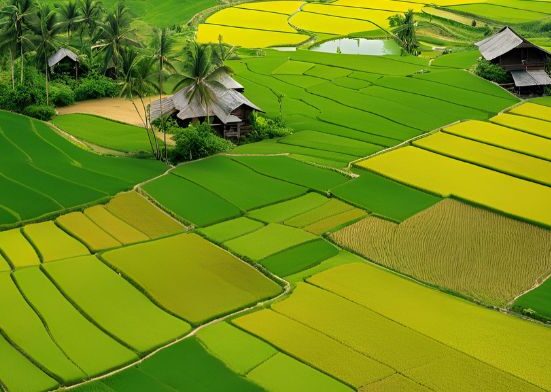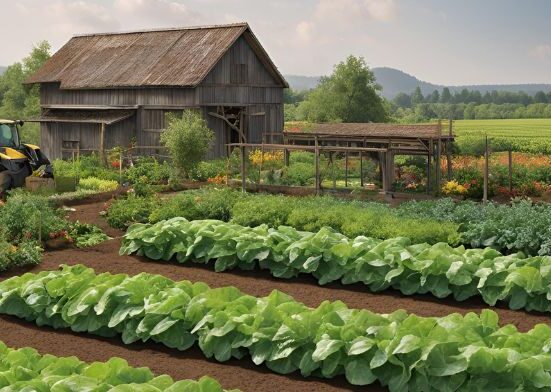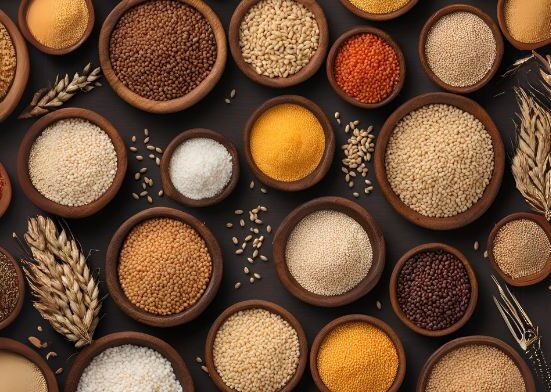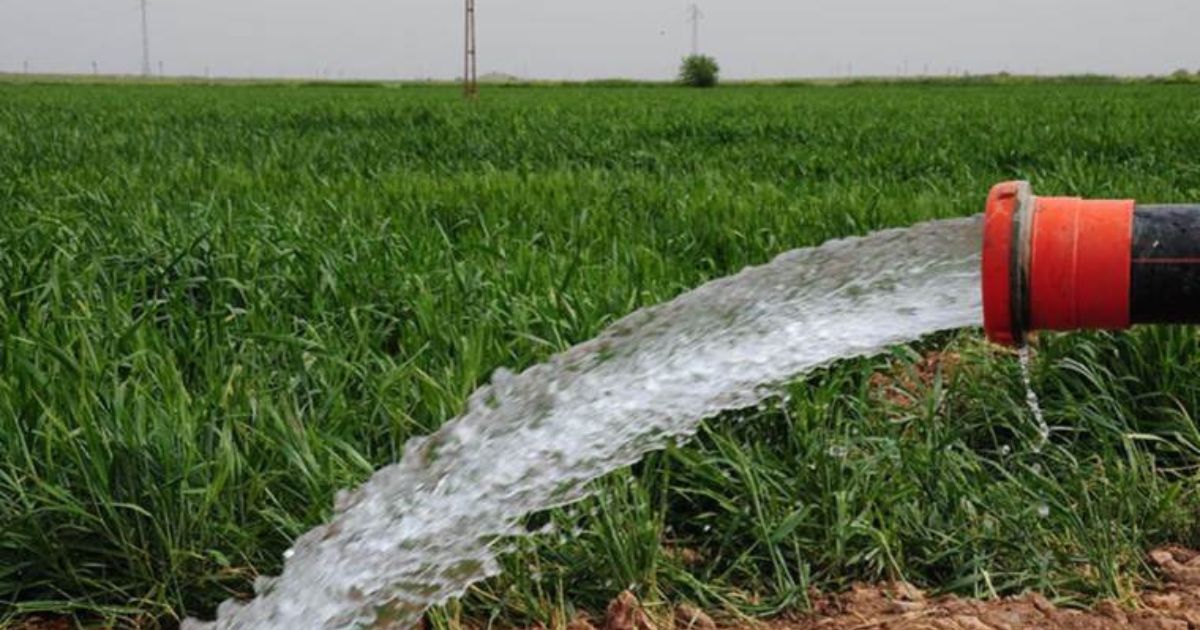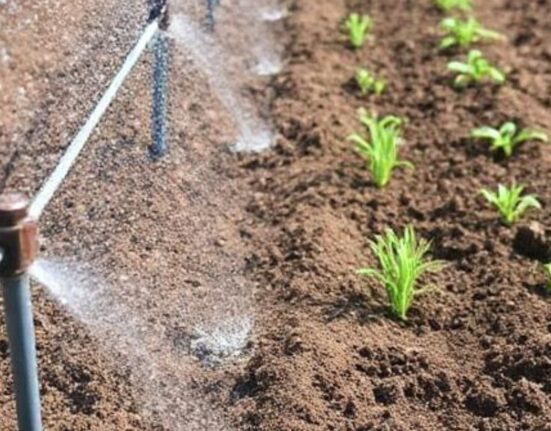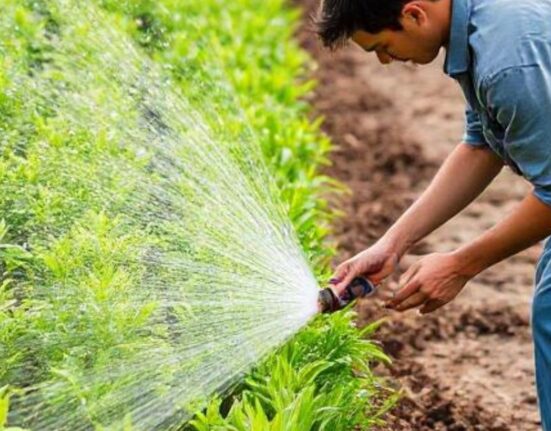Flood Irrigation has been used for centuries to supply water to agricultural lands, particularly in areas where water is abundant and needs to be distributed across vast expanses of crops. It is one of the oldest and most traditional irrigation methods, still widely practiced in various parts of the world today. Despite the advent of more modern and efficient irrigation techniques, flood irrigation remains a staple in many agricultural systems. In this blog post, we’ll explore the pros and cons of flood irrigation, discuss its impact on agriculture, and examine whether this method still has a place in modern pros and cons of flood irrigation farming.
What is Flood Irrigation?
Flood irrigation, also known as surface irrigation or gravity-fed irrigation, is a method where water is allowed to flow over the soil’s surface to reach plants. It involves inundating the agricultural field with water, typically using channels or ditches to direct water to different areas. The water then flows through the field, filling depressions in the land, and is absorbed by the soil. Flood irrigation systems have been historically utilized in regions with plentiful water sources such as rivers, lakes, and reservoirs. The method is particularly well-suited to areas with relatively flat terrain, making it easier for water to spread evenly across large plots of flood irrigation pros and cons. Top Tips For Better Surface Irrigation Systems.
Types of Flood Irrigation
Flood irrigation is a traditional method of irrigating agricultural fields, where water is applied directly to the land and allowed to spread naturally over the surface. There are several types of flood irrigation, each suited to different landscapes and crop needs:
- Surface Flooding: This is the most common form, where water is released onto the field in large quantities, allowing it to flow across the surface. It is simple and inexpensive, but can lead to water wastage if not appropriately managed.
- Basin Flooding: In this method, fields are divided into small basins surrounded by dikes. Water is allowed to fill each basin gradually, ensuring even distribution. It’s especially effective for crops that require a steady water supply, like rice.
- Furrow Flooding: Water is directed into shallow channels or furrows between rows of crops. This method is efficient as it reduces water wastage and is ideal for row crops such as vegetables and cotton.
- Border Flooding: In this type, fields are divided into long, narrow strips or borders. Water flows down the borders, ensuring even coverage of the crops. This method is often used for larger fields with uniform crops.
The Pros of Flood Irrigation
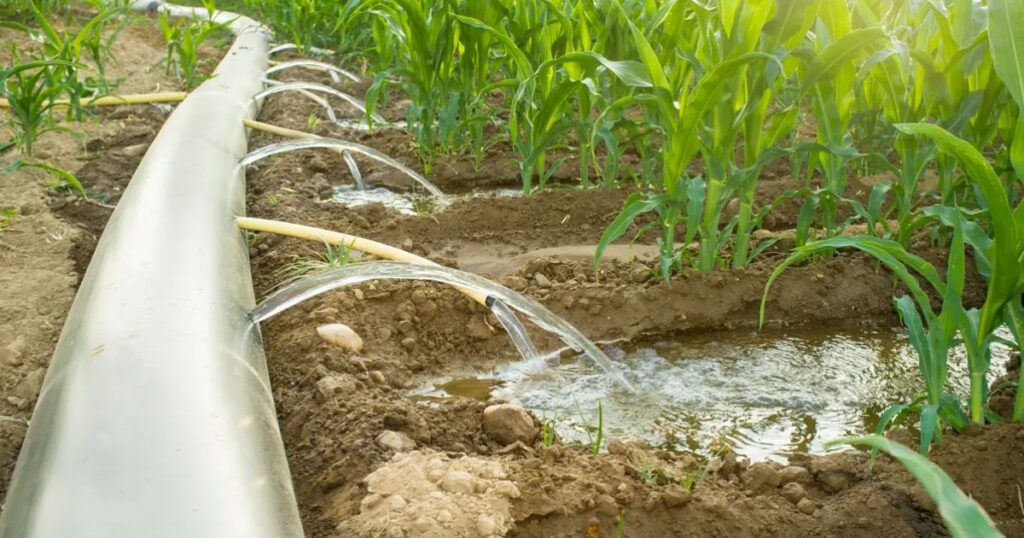 Flood irrigation is a traditional method that involves the controlled flooding of fields to deliver water to crops. One of its primary advantages is its simplicity and low cost. It requires minimal technological equipment, making it an affordable option for farmers, especially in regions with limited access to advanced irrigation systems. Additionally, flood irrigation is adequate in areas with uneven terrain, where other methods like drip or sprinkler irrigation may be less feasible. Flood irrigation also promotes water distribution across a broad area, ensuring that large fields can be watered evenly. This method can be beneficial in cultivating certain crops, such as rice, that require standing water for growth. It helps control soil temperature, prevent moisture loss, and minimize the need for frequent irrigation.
Flood irrigation is a traditional method that involves the controlled flooding of fields to deliver water to crops. One of its primary advantages is its simplicity and low cost. It requires minimal technological equipment, making it an affordable option for farmers, especially in regions with limited access to advanced irrigation systems. Additionally, flood irrigation is adequate in areas with uneven terrain, where other methods like drip or sprinkler irrigation may be less feasible. Flood irrigation also promotes water distribution across a broad area, ensuring that large fields can be watered evenly. This method can be beneficial in cultivating certain crops, such as rice, that require standing water for growth. It helps control soil temperature, prevent moisture loss, and minimize the need for frequent irrigation.
Moreover, flood irrigation replenishes groundwater reserves as the water slowly seeps into the soil, which benefits regions facing water scarcity. Furthermore, flood irrigation systems are relatively low-maintenance, requiring fewer complex components than other systems. However, despite its advantages, it is essential to manage the system carefully to prevent water wastage and soil Organic methods to enhance soil fertility erosion, ensuring long-term sustainability.4o mini
Low Initial Cost
One of the significant advantages of flood irrigation is its relatively low upfront cost. Unlike modern irrigation techniques like drip or sprinkler systems, flood irrigation requires minimal infrastructure. Farmers only need to create channels or ditches to direct water to the fields, and they can use natural gravity to distribute the water. This simplicity makes flood irrigation a good option for small-scale farmers in developing regions who may not have access to expensive modern equipment. Furthermore, since the method relies on natural forces like gravity, ongoing energy and maintenance costs are often pros of flood irrigation low.
Effective in Flat Land and Abundant Water
Flood irrigation is particularly adequate in areas with flat terrain, where water can easily spread across large fields. Such locations can efficiently cover extensive areas, ensuring crops receive sufficient water. Flood irrigation can be a straightforward and reliable method if water resources are abundant, such as in regions with frequent rainfall or nearby flood irrigation pros and cons rivers. For many farmers in areas where water is readily available, flood irrigation is a natural choice as it can meet their irrigation needs without requiring complex flood irrigation pros and cons What is flood irrigation technology.
Improves Soil Fertility
Flood irrigation can promote the natural leaching of salts from the soil. When water flows over the soil, it can help wash away harmful salts and minerals, which might otherwise accumulate and damage the crops. This is particularly important in regions where the soil may be prone to salinization, as it ensures the soil’s long-term health and reduces the need for chemical amendments. Additionally, flood irrigation can help improve soil structure by maintaining moisture levels. Flooding can make the soil looser and less compact, facilitating better root growth and promoting nutrient flood irrigation definition uptake.
Simple to Operate
Unlike some advanced irrigation techniques requiring highly skilled labor and specialized equipment, flood irrigation is relatively simple. Farmers can manage the water flow by adjusting gates or channels; the process is intuitive. This is especially beneficial for small-scale and subsistence farmers who might not have the resources or training to implement more complex systems.
Flexibility for Different Crops
Flood irrigation is adaptable to a wide variety of crops. Whether you are growing grains, vegetables, or orchards, flood irrigation can be adjusted to suit different crop requirements. The method is often used in rice cultivation, for example, where crops thrive when submerged in water. Moreover, flood irrigation can be employed across diverse soil types. While it may not suit extremely rocky or uneven land, it works well on many flat fields.
The Cons of Flood Irrigation
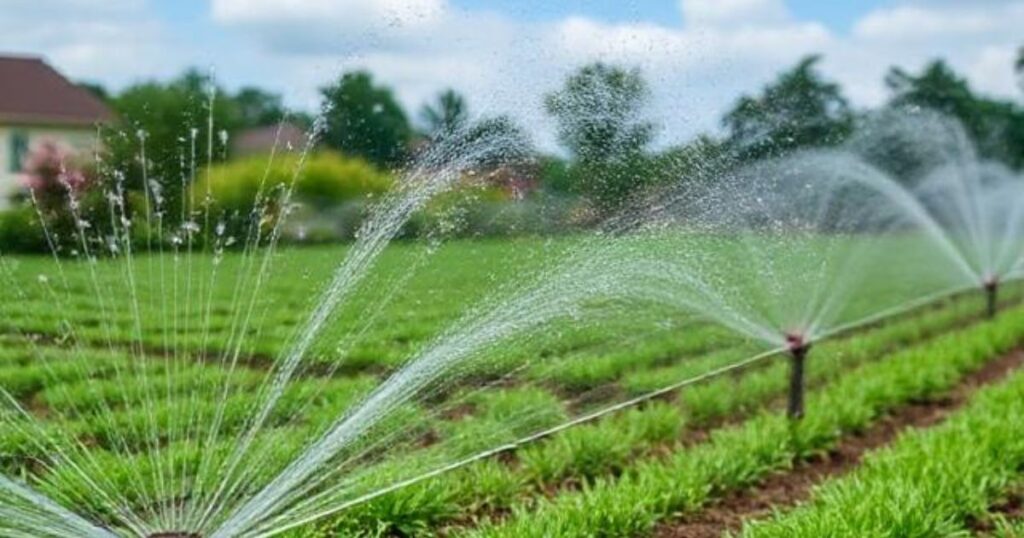 While widely used in agricultural practices, flood irrigation presents several significant disadvantages. One major con is its inefficiency in water usage. Flooding fields often leads to water wastage due to evaporation, runoff, or absorption beyond plant roots. This excess water consumption can exacerbate water scarcity, especially in regions facing droughts or limited water resources. Another issue with flood irrigation is soil salinization. Over time, excessive water can cause salts in the soil to accumulate, leading to reduced soil fertility and lower agricultural yields. Additionally, the constant saturation of the soil can weaken its structure, resulting in soil erosion and compaction.
While widely used in agricultural practices, flood irrigation presents several significant disadvantages. One major con is its inefficiency in water usage. Flooding fields often leads to water wastage due to evaporation, runoff, or absorption beyond plant roots. This excess water consumption can exacerbate water scarcity, especially in regions facing droughts or limited water resources. Another issue with flood irrigation is soil salinization. Over time, excessive water can cause salts in the soil to accumulate, leading to reduced soil fertility and lower agricultural yields. Additionally, the constant saturation of the soil can weaken its structure, resulting in soil erosion and compaction.
Flood irrigation also poses a significant labor and energy cost, requiring manual control or extensive infrastructure to distribute water evenly across fields. This system is also challenging to automate compared to other irrigation methods, such as drip or sprinkler irrigation. As a result, flood irrigation tends to be less labor-efficient and more costly in terms of long-term maintenance. Lastly, flood irrigation is susceptible to uneven water distribution, which can cause some areas of crops to become overwatered while others may not receive enough moisture. This uneven irrigation reduces crop health and yields, ultimately flood irrigation advantages and disadvantages limiting its effectiveness as an irrigation method.
Water Wastage
One of the most significant drawbacks of flood irrigation is the potential for water wastage. Because the water is spread over a large area, much of it may evaporate before reaching the crops, especially in hot climates. Additionally, water may run off the field or infiltrate unnecessary areas. Flood irrigation can be highly inefficient in regions where water is scarce, such as arid and semi-arid areas. It can lead to the depletion of water resources and environmental damage, particularly if the water is not managed advantages of flood irrigation correctly.
Soil Erosion
Flood irrigation can contribute to soil erosion, particularly if the water flows too rapidly or if the land is sloped. As water floods fields, it can carry away topsoil, essential for crop growth. Over time, this erosion can degrade the soil, reduce its fertility, and create uneven surfaces that are difficult to flood irrigation pros and cons farm. For this reason, flood irrigation is not ideal for areas with significant slopes or where soil erosion is a Weed management strategies concern.
Increased Weed Growth
Because flood irrigation provides a constant water supply to the soil, it creates a favorable environment for weeds to grow. Weeds thrive in moist conditions, and without proper management, they can quickly overtake crops, competing for nutrients and water. This may result in lower crop yields and a greater need for herbicides, which could harm the ecosystem.
Inconsistent Water Distribution
While flood irrigation works well on flat land, it can be less effective on uneven terrain. In areas with irregular topography, water may not be distributed uniformly, leading to some parts of the field being overwatered while others are underwatered. This uneven distribution can result in poor crop growth and inefficiency. Furthermore, flood irrigation systems often lack precision, meaning that different crops with different water needs might receive too much or too little water.
High Labor Requirements
Although the setup costs of flood irrigation are relatively low, the system may require considerable labor for operation. This includes managing the water flow, checking irrigation channels, and monitoring fields for flooding. This can become time-consuming and physically demanding in larger operations, particularly if the land is vast.
Environmental Impact of Flood Irrigation
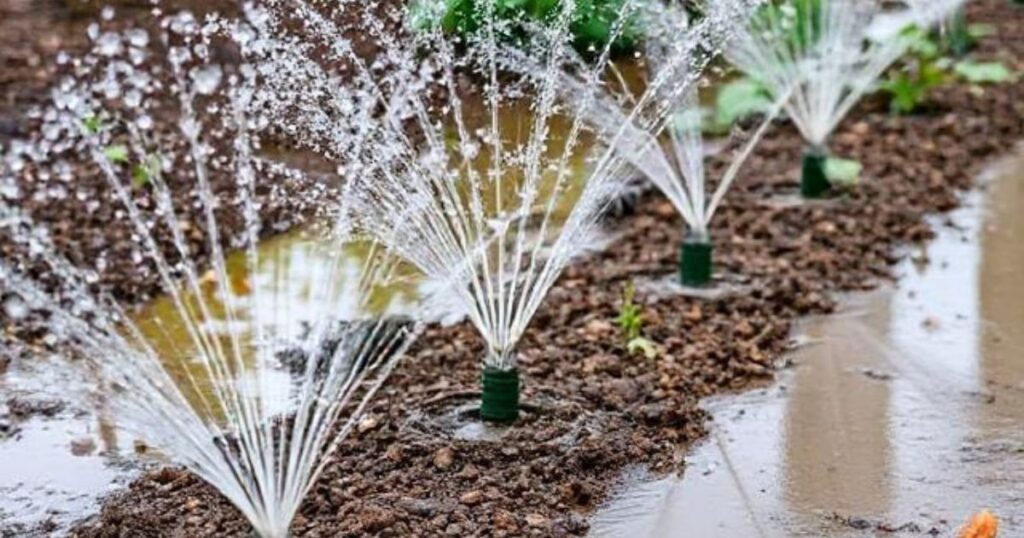 Flood irrigation’s impact on the environment can be both positive and negative. On the one hand, it can help maintain soil fertility and reduce the need for chemical fertilizers. On the other hand, its inefficiency in water use and potential for soil erosion can be harmful in the long term. In areas with limited water resources, flood irrigation can exacerbate the problem of water scarcity. The large amounts of water needed can deplete rivers and aquifers, threatening the long-term sustainability of agriculture in these regions. Moreover, the practice can lead to soil salinization, particularly in desert regions with high evaporation rates.
Flood irrigation’s impact on the environment can be both positive and negative. On the one hand, it can help maintain soil fertility and reduce the need for chemical fertilizers. On the other hand, its inefficiency in water use and potential for soil erosion can be harmful in the long term. In areas with limited water resources, flood irrigation can exacerbate the problem of water scarcity. The large amounts of water needed can deplete rivers and aquifers, threatening the long-term sustainability of agriculture in these regions. Moreover, the practice can lead to soil salinization, particularly in desert regions with high evaporation rates.
Is Flood Irrigation Still Relevant?
Despite its drawbacks, flood irrigation remains a viable and essential irrigation method in many parts of the world. It continues to be a common practice in developing countries, where modern irrigation technologies may be inaccessible or prohibitively expensive. In some cases, it may be the most appropriate method, given the availability of water resources and the land’s topography.
However, when water conservation is a priority and agricultural land is more valuable, more efficient Sprinkler systems and drip irrigation are frequently chosen. These systems offer more precise control over water usage and can help reduce waste and soil erosion.
Environmental Impact
The environmental impact of irrigation methods is critical when evaluating their sustainability. Traditional irrigation practices often lead to water wastage, soil degradation, and disruptions to local ecosystems. For instance, surface irrigation can result in overwatering, increasing runoff and erosion. In contrast, modern techniques like drip irrigation are designed to deliver water more efficiently, reducing wastage and minimizing adverse effects on soil and surrounding vegetation. However, all irrigation methods must consider water source sustainability, energy consumption, and the potential for affecting natural habitats.
Effects on Local Ecosystems
Different irrigation methods affect local ecosystems in varying ways. Overuse of water resources can reduce river flow and impact aquatic habitats, while improper drainage may cause soil salinization, harming plant life and disrupting agricultural productivity. Techniques like flood irrigation can alter natural water cycles, affecting groundwater levels and species dependent on these resources. In contrast, precision irrigation methods that minimize water consumption help maintain local biodiversity and reduce the risk of habitat destruction. However, care must still be taken to ensure that irrigation infrastructure does not unintentionally harm ecosystems.
Comparison with Other Irrigation Methods Regarding Sustainability
Sustainability hinges on water conservation, energy efficiency, and the broader environmental footprint when comparing different irrigation methods. For example, surface irrigation systems are generally less efficient due to evaporation and runoff, requiring large amounts of water, which can deplete local water resources. Drip irrigation, on the other hand, is far more efficient, using less water while directly delivering it to plant roots. However, it may require more maintenance and investment in infrastructure. Other techniques, like center pivot irrigation, offer an intermediate approach, where water is distributed evenly but can still lead to inefficiencies without proper management.
The most sustainable methods focus on water conservation, energy efficiency, and minimal disruption to the surrounding ecosystems. Drip and sprinkler irrigation systems, for instance, are considered among the most sustainable as they use water more precisely, thus reducing the negative impacts of traditional methods.
Technological Advancements and Innovations in Flood Irrigation Systems
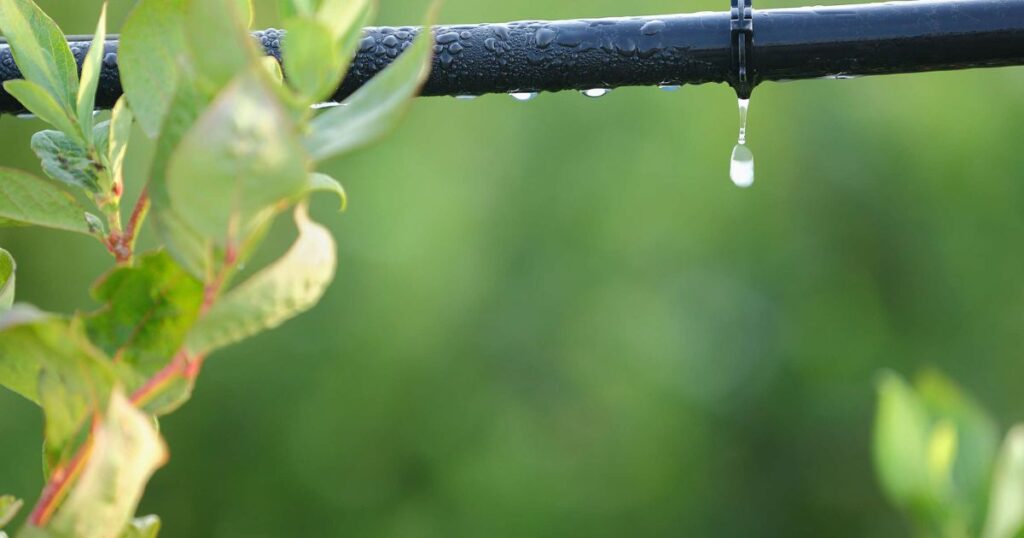 Technological advancements in flood irrigation systems have significantly improved efficiency and sustainability. Automation plays a crucial role in modernizing traditional irrigation methods. Automated systems now incorporate smart sensors, weather data, and moisture-level monitoring to optimize water distribution, reducing waste and ensuring crops receive adequate hydration. These innovations help conserve water, reduce labor costs, and improve crop yields by delivering precise amounts of water at the right time.
Technological advancements in flood irrigation systems have significantly improved efficiency and sustainability. Automation plays a crucial role in modernizing traditional irrigation methods. Automated systems now incorporate smart sensors, weather data, and moisture-level monitoring to optimize water distribution, reducing waste and ensuring crops receive adequate hydration. These innovations help conserve water, reduce labor costs, and improve crop yields by delivering precise amounts of water at the right time.
Automation in Flood Irrigation Systems
Automation in flood irrigation has drastically enhanced the management and control of water flow. Automated systems can adjust water levels, control pumps, and monitor the entire irrigation process based on real-time environmental conditions. For example, soil moisture sensors embedded in the field can send data to a central system, automatically adjusting irrigation schedules and water volume. This leads to more efficient water use and minimizes the crops’ risk of over-irrigation or drought stress.
Integration of Flood Irrigation with Modern Water Management Tools
The integration of flood irrigation with modern water management tools has revolutionized agricultural practices. By combining flood irrigation with Geographic Information Systems (GIS), remote sensing, and weather forecasting tools, farmers can make more informed decisions regarding water usage. These systems help predict water requirements, monitor water quality, and evaluate the overall efficiency of irrigation practices. With real-time data, farmers can better understand water distribution patterns and reduce water wastage, leading to improved resource management and sustainable agriculture.
Conclusion:
Flood irrigation systems have been used for centuries and continue to play an essential role in agriculture. While they offer some advantages, such as low initial costs, simplicity, and soil fertility benefits, they also have significant downsides, including water wastage, soil erosion, and inefficient water distribution. The decision to use flood irrigation depends on several factors, including water availability, terrain, crop type, and environmental conditions.
As modern irrigation technologies become more accessible, farmers may choose to switch to more efficient methods. Still, flood irrigation will remain an essential part of the agricultural landscape in many regions for years. By understanding both the benefits and challenges of flood irrigation, farmers can make informed decisions about managing their water resources best and ensure the long-term sustainability of their operations.</p>
FAQ:
What is Flood Irrigation?
The process of applying water directly to the soil’s surface and letting it run off the land is known as flood irrigation. This process involves flooding the field with water, seeping into the soil, and es providing moisture to crops.
What types of Crops are Best Suited for Flood Irrigation?
Flood irrigation works well for crops like rice, which thrive in submerged conditions. It can also be used for other flood-tolerant crops, but is generally less efficient for vegetables, fruits, or other water-sensitive plants.</span></p>
How does Flood Irrigation Affect water Conservation?
Flood irrigation is less efficient regarding water conservation because of the potential for runoff and evaporation. However, this might not be a significant issue in areas with abundant water resources. In water-scarce regions, more efficient irrigation methods might be necessary.
How can Flood Irrigation Impact the Environment?
Flood irrigation can contribute to environmental issues like waterlogging, salinization, and soil degradation if not managed carefully. Excessive water use can also deplete local water resources.
Can Flood Irrigation be Automated?
While flood irrigation is generally manual, it can be automated using gates and sluices to control water flow. However, this still requires maintenance and monitoring to ensure efficient water use.



